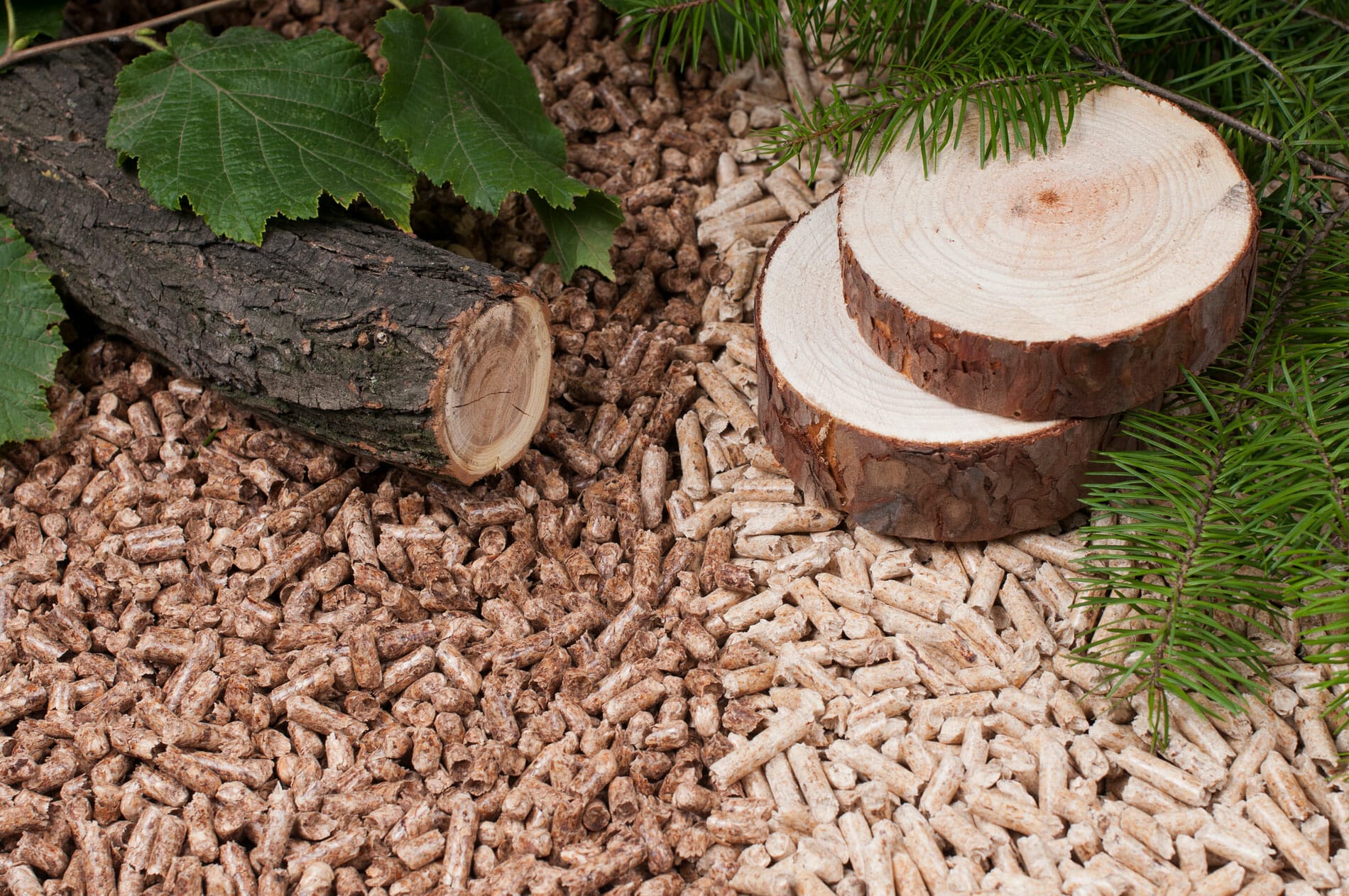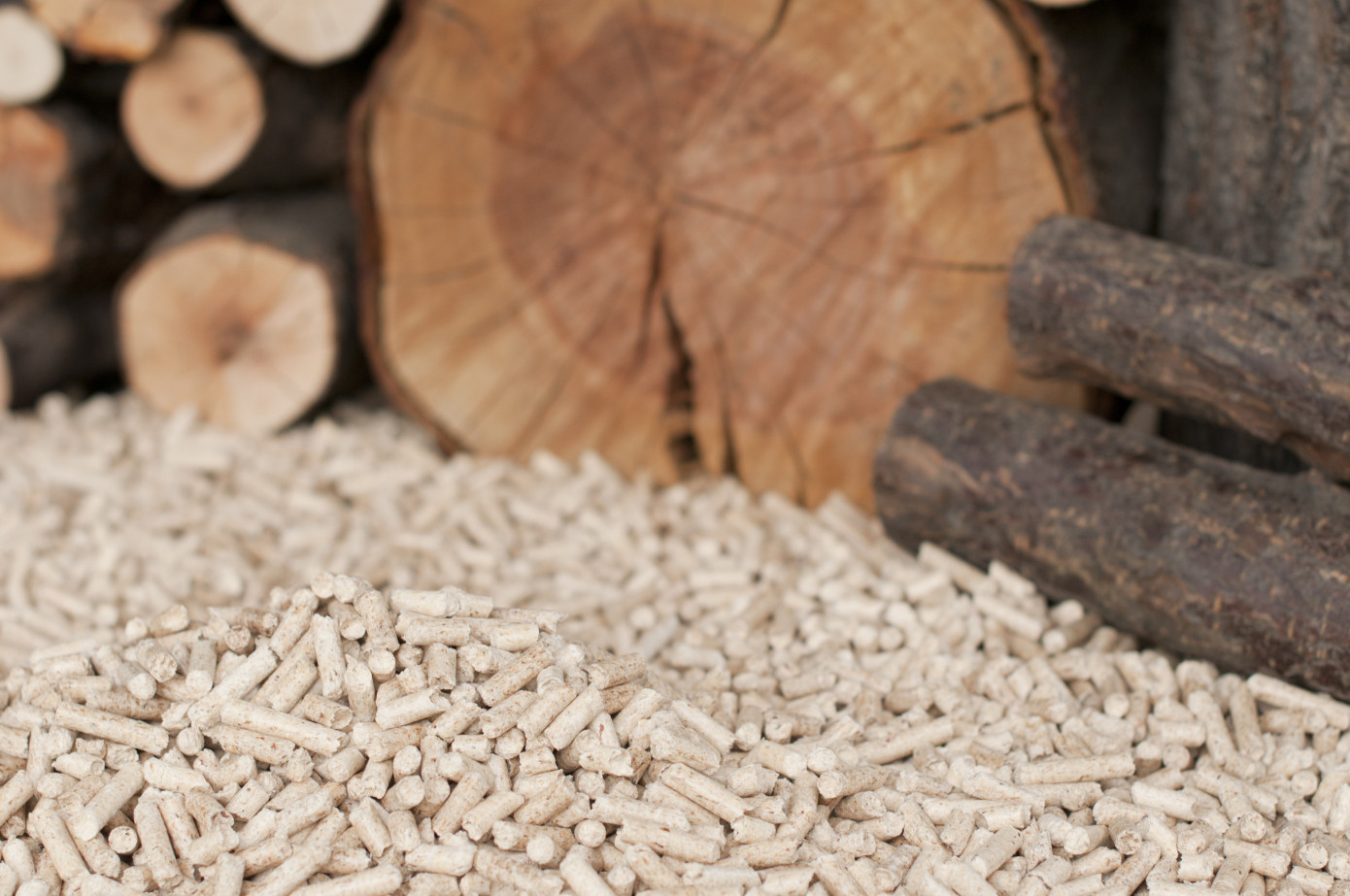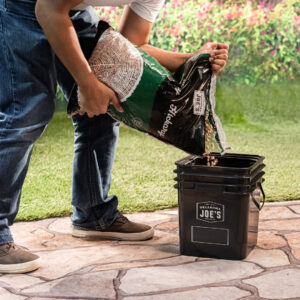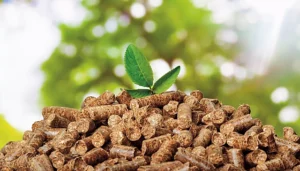Wood pellets have emerged as a popular and efficient energy source, particularly in the realm of heating. Their versatility and sustainability position them as an essential component in modern living and industrial applications. In this blog post, we will explore the top ten high-quality from Renenco available at the best prices in 2024. Let’s delve deep into the world of wood pellet, their classifications, production standards, comparisons with other fuels, storage guidance, and more.
What Are Wood Pellets? Applications in Life and Industry

Definition and wood pellet production process

Wood pellet is small cylindrical pieces made from compressed organic material, typically sawdust, wood shavings, or wood chips. Due to their compact size, they are conducive for use in pellet stoves, boilers, and industrial applications.
The production process of wood pellet is intricate yet fascinating. It begins with sourcing raw materials, primarily from sawmills where wood residues are abundant. The raw materials are dried to reduce moisture content, which is crucial for ensuring high-quality pellets. Once dried, they are ground into a fine powder, often using hammer mills, before being fed into pellet mills. At this stage, heat and pressure transform the powdered material into dense pellets. These pellets are then cooled, screened for quality, and packaged for distribution.
This production process not only creates an efficient fuel source but also contributes to reducing waste in the timber industry, turning by-products into valuable resources.
Types of wood used in pellet production

The type of wood used significantly affects the quality and characteristics of the pellets produced. Hardwoods such as oak, maple, and hickory are commonly utilized due to their high energy content and low ash production. Softwoods, on the other hand, like pine and spruce, tend to ignite quickly and burn hotter, making them ideal for certain applications.
Different species of wood contribute unique aromas and flavors when burned, especially when used in grilling and smoking applications. This aspect can be particularly appealing for outdoor cooks seeking to enhance their culinary creations.
Environmental benefits of wood pellet
One of the most compelling reasons for the increasing popularity of wood pellet is their environmental impact. They are considered carbon-neutral because the carbon dioxide released during combustion is roughly equivalent to the amount absorbed by trees during their growth. This cycle promotes sustainable forestry and encourages responsible land management practices.
Furthermore, wood pellets help reduce reliance on fossil fuels, thus playing a part in combatting climate change. By choosing wood pellets over traditional fuels, consumers can make a significant difference in their carbon footprint.
Classification of Wood Pellet According to International Standards

Classifying wood pellet according to established international standards ensures that consumers receive products of consistent quality and performance.
EN Plus Certification
One prominent classification system is the EN Plus certification, which provides a benchmark for quality assurance in Europe. This standard categorizes wood pellet into three classes: A1, A2, and B.
A1 pellets represent the highest quality, made exclusively from pure virgin wood with minimal ash content. These pellets burn cleanly and efficiently, making them suitable for residential heating systems and high-end commercial applications.
A2 pellets are sourced from a mix of virgin and non-virgin wood, which may include slightly higher levels of bark or other non-wood materials. While still acceptable for many applications, they may produce more ash than A1 pellets. Class B pellets contain a broader range of feedstock, including industrial wood waste and require less stringent quality controls.
DIN Plus Certification
Another notable standard is DIN Plus, mainly applied in Germany. Similar to EN Plus, DIN Plus focuses on parameters such as diameter, length, bulk density, and ash content. Both certifications ensure that wood pellet meet strict quality requirements, thus promoting consumer confidence.
Other regional standards
In addition to EN Plus and DIN Plus, various regions have their own certification systems tailored to local needs. For instance, the Pellet Fuels Institute (PFI) in the United States has adopted its testing and quality control criteria, while Canada utilizes the CAN/CSA-Pallet Standards. These standards play a pivotal role in ensuring that manufacturers maintain high-quality products that are safe and efficient for consumers.
Renenco’s Wood Pellet Quality Standards
Renenco is known for its commitment to producing top-tier wood pellet that adhere to stringent quality standards.
Sourcing and manufacturing practices
To ensure the highest quality, Renenco sources its raw materials from sustainably managed forests. The manufacturing process emphasizes eco-friendliness and efficiency. By utilizing advanced technology in pelletizing, Renenco minimizes waste and conserves energy throughout the production cycle.
Their facilities employ rigorous quality control checks at multiple stages of production—beginning from raw material selection to final packaging. Each batch undergoes extensive testing to guarantee consistency in composition and performance. The result is premium wood pellets that customers can depend on for optimal heating and energy output.
Testing and certification processes
Renenco places great importance on transparency regarding the quality of its products. All wood pellets go through independent laboratory testing, where they are evaluated against national and international standards. Through these tests, factors such as calorific value, ash content, and moisture levels are meticulously measured.
Upon passing these tests, Renenco proudly displays certifications that affirm their compliance with industry norms. Customers can easily verify these credentials, giving them peace of mind when choosing Renenco wood pellets as their energy source.
Customer feedback and satisfaction
Feedback from customers highlights the reliability and performance of Renenco wood pellets. Many users commend the pellets’ low ash production and high energy yield, which translate into cost savings and reduced maintenance. Additionally, customer service and support from Renenco add to the overall positive experience.
Engagement with the community is another area where Renenco shines. They actively seek customer input, using it as a tool to refine and enhance their products continually. Their focus on customer satisfaction underscores their dedication to providing the best possible wood pellets available.
Comparing Wood Pellets With Other Fuels
When evaluating energy sources, it’s essential to compare wood pellets with alternative fuels to determine which is the most advantageous choice for your needs.
Wood pellets versus natural gas
Natural gas is often touted as a cleaner-burning fossil fuel compared to coal. However, wood pellets offer several advantages over natural gas. For one, wood pellets are renewable, while natural gas is finite and contributes to greenhouse gas emissions.
While natural gas appliances can deliver instant heat, wood pellet stoves provide a warm ambiance and cozy atmosphere that many homeowners appreciate. Additionally, wood pellets can be more cost-effective in specific regions, especially where natural gas prices fluctuate dramatically.
Wood pellets versus propane
Propane is another common alternative energy source. Like natural gas, propane can emit harmful emissions during combustion. In contrast, burning wood pellets produces minimal emissions, reaffirming their position as an environmentally friendly option.
The initial installation costs for propane systems can be substantial, whereas wood pellet stoves have varying price points that cater to different budgets. Thus, homeowners seeking an affordable and sustainable heating solution may find wood pellets more appealing.
Wood pellets versus electricity
Electric heating is prevalent in many homes; however, it can be inefficient and costly, especially during peak periods. Wood pellets offer a practical alternative, delivering reliable heat without the fluctuations associated with electricity pricing.
Moreover, wood pellets allow users to have greater control over their heating systems. Unlike electric heaters that may leave users dependent on utility companies, wood pellet stoves provide independence and security, especially in rural areas prone to power outages.
Guide to Choosing Suitable Wood Pellets

Selecting the right wood pellets necessitates consideration of various factors that align with your heating needs and preferences.
Assessing your heating requirements
Before purchasing wood pellets, assess how much heat you need based on the size of your space and insulation quality. Knowing the square footage you want to heat will help you determine how many pellets you’ll require annually.
Consider also the type of appliance you are using—certain stoves may perform better with specific wood types or pellet grades. Always consult the manufacturer’s guidelines for recommendations.
Understanding pellet grades
Understanding the differences between pellet grades is critical to making an informed choice. As mentioned earlier, high-grade pellets, such as those certified under EN Plus A1, will provide superior heating efficiency and produce minimal ash.
If you’re using a high-efficiency stove, investing in higher-grade pellets could enhance your experience, while lower-quality pellets might suffice for conventional or older models.
Evaluating price versus quality
While the price is always a consideration, it’s important not to compromise on quality in favor of savings. Cheaper wood pellets may lead to higher ash content and inconsistent burn rates, resulting in potential inefficiencies and increased cleaning efforts.
It’s worth researching suppliers, reading reviews, and engaging with fellow wood pellet users to gather insights on the best value options available. This approach allows consumers to strike a balance between quality and affordability.
Effective Storage and Usage of Wood Pellets

Proper storage and usage significantly influence the performance and longevity of wood pellets.
Optimal storage conditions
To maintain the integrity of wood pellets, store them in a cool, dry place, free from excess moisture. Moisture can cause pellets to swell, break apart, or even become moldy, affecting their combustibility. Using sealed containers or dedicated storage bins can protect your pellets from humidity and pests.
It’s also advisable to keep wood pellets off the ground using pallets or shelving to prevent water damage. When stacking bags, allow for air circulation to maintain dryness.
Quantity and rotation
It’s wise to purchase a sufficient quantity of wood pellets to avoid running out during the heating season. However, buying in bulk requires attention to rotation, as older pellets should be used first to prevent degradation in quality.
Make a habit of checking your inventory periodically and keeping track of expiration dates. Generally, wood pellets can last up to two years if stored properly, so plan accordingly.
Common usage tips
To maximize the performance of wood pellets, familiarize yourself with your heating appliance. Keep regular maintenance schedules to ensure optimal function. Clean your stove or boiler frequently to reduce ash buildup and improve airflow.
When starting a fire, consider mixing different types of pellets to achieve desirable burn characteristics. Some users enjoy experimenting with flavored pellets for grilling, enhancing the taste of their meals.
How to fix common issues

Even with proper care, some issues may arise during the use of wood pellets. Knowing how to troubleshoot these problems can save you time and frustration.
Poor ignition
If you experience difficulty igniting wood pellets, check for proper airflow in your stove. Blockages in the venting system can hinder the combustion process.
Additionally, ensure that your pellets are dry and free from moisture. If they appear damp or swollen, switch to fresher pellets to see if ignition improves.
Uneven burning
Uneven burning can occur for various reasons, such as poor-quality pellets or incorrect stove settings. If you notice hotspots or inconsistencies in flame height, adjust the airflow settings on your stove.
Using higher-grade pellets may also resolve this issue, as they provide more consistent burn rates.
Excessive ash buildup
While all wood pellets produce some ash, excessive ash accumulation can indicate poor quality or wrong pellet types. Regular cleaning of your appliance is crucial, but choosing high-quality pellets minimizes this issue.
Additionally, consider increasing the frequency of pellet changes if you continue facing ash-related problems.
Frequently Asked Questions

Are wood pellets really more cost-effective than traditional fuels?
Yes, wood pellets can be more cost-effective than traditional fuels, particularly in regions where wood is abundant. The price of wood pellets tends to be stable compared to volatile fossil fuel markets. Additionally, the efficiency of wood pellet stoves means more energy is derived from a smaller volume of pellets compared to other fuels.
How to distinguish between high and low-quality wood pellets?
High-quality pellets generally have a uniform shape and size, minimal dust content, and low moisture levels. Checking for certifications such as EN Plus or DIN Plus is also a reliable indicator of pellet quality. Low-quality pellets may be discolored, exhibit irregular sizes, and produce excessive ash and smoke when burned.
What is the maximum storage time for wood pellets?
When stored correctly, wood pellets can last up to two years without significant loss of quality. However, it’s essential to monitor for signs of moisture and degradation. Always practice the ‘first in, first out’ principle to ensure older pellets are used first.
Are wood pellets environmentally friendly?
Absolutely! Wood pellets are considered a renewable energy source. As long as sustainable forestry practices are employed, burning wood pellets contributes to a closed carbon cycle, minimizing net carbon emissions and supporting environmental stewardship.
Conclusion

Wood pellets are gaining recognition as a reliable and sustainable energy source, with numerous applications across residential and industrial sectors. Renenco’s commitment to producing high-quality wood pellets exemplifies the standard needed to ensure efficiency and environmental responsibility.
As we navigate the evolving landscape of energy needs, wood pellets stand out as a versatile solution, offering cost savings and reliability without compromising our planet. Whether you’re looking to heat your home, grill outdoors, or engage in industrial applications, understanding wood pellets and making informed choices can lead to a brighter, more sustainable future for everyone.




